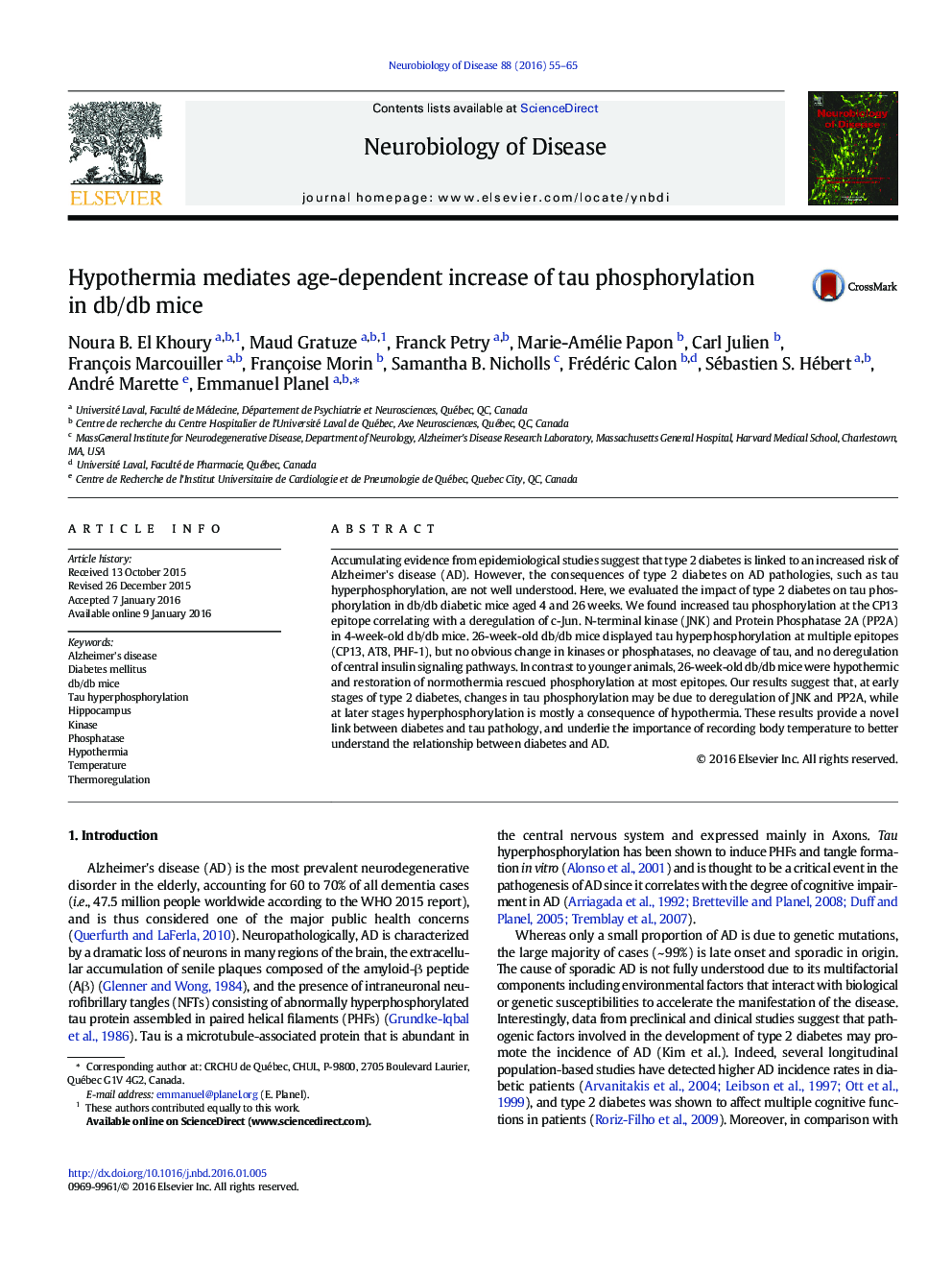| Article ID | Journal | Published Year | Pages | File Type |
|---|---|---|---|---|
| 6021434 | Neurobiology of Disease | 2016 | 11 Pages |
â¢Type 2 diabetes enhances the risk of Alzheimer's disease.â¢Tau hyperphosphorylation is a hallmark of Alzheimer's disease.â¢The db/db mouse model of type 2 diabetes has age-related tau hyperphosphorylation.â¢In older mice, hypothermia is the main cause of tau hyperphosphorylation.â¢Patients temperature should be included in studies between the two diseases.
Accumulating evidence from epidemiological studies suggest that type 2 diabetes is linked to an increased risk of Alzheimer's disease (AD). However, the consequences of type 2 diabetes on AD pathologies, such as tau hyperphosphorylation, are not well understood. Here, we evaluated the impact of type 2 diabetes on tau phosphorylation in db/db diabetic mice aged 4 and 26Â weeks. We found increased tau phosphorylation at the CP13 epitope correlating with a deregulation of c-Jun. N-terminal kinase (JNK) and Protein Phosphatase 2A (PP2A) in 4-week-old db/db mice. 26-week-old db/db mice displayed tau hyperphosphorylation at multiple epitopes (CP13, AT8, PHF-1), but no obvious change in kinases or phosphatases, no cleavage of tau, and no deregulation of central insulin signaling pathways. In contrast to younger animals, 26-week-old db/db mice were hypothermic and restoration of normothermia rescued phosphorylation at most epitopes. Our results suggest that, at early stages of type 2 diabetes, changes in tau phosphorylation may be due to deregulation of JNK and PP2A, while at later stages hyperphosphorylation is mostly a consequence of hypothermia. These results provide a novel link between diabetes and tau pathology, and underlie the importance of recording body temperature to better understand the relationship between diabetes and AD.
